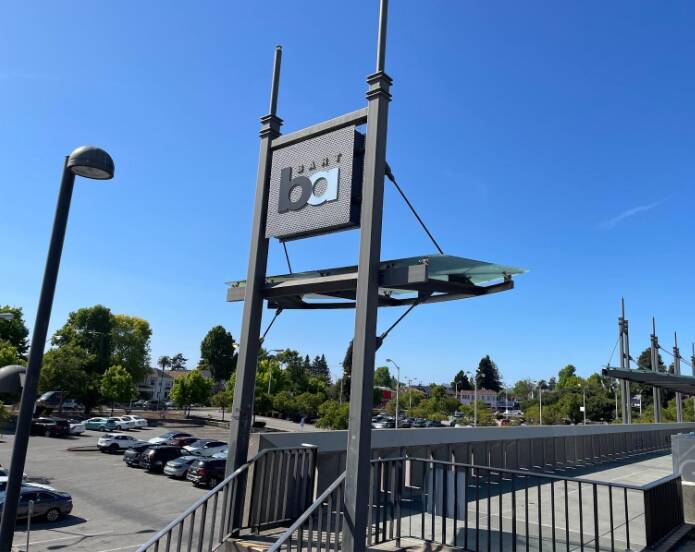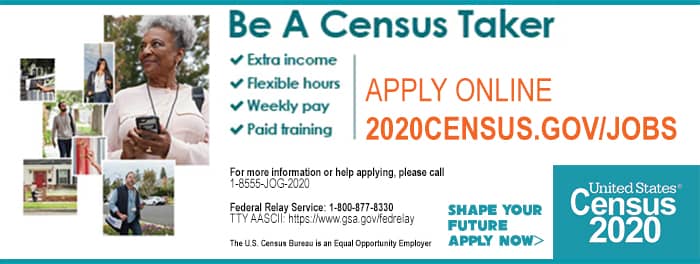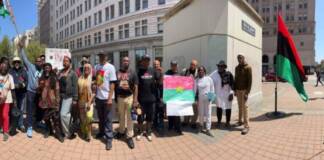
by Mrs. Richie Smith, Priscilla Hine, Willie Phillips, Tony Wilkinson, Gene Turitz
Our organization, Friends of Adeline (FOA), is a community advocacy group formed in 2015 after local residents attended a City meeting during which officials proclaimed their goal to fix up the neighborhood and make South Berkeley a colony. Shocked at this thought, a group of residents, who love the community, a home for Black, Brown and Asian people, as well as Caucasians, came together. FOA is fighting for all of South Berkeley, a historically mixed race and originally redlined neighborhood, and advocates for its small businesses and nonprofits.
Part 1: It’s time to make some noise!
This is the first in a series of articles that was originally published by the Berkeley Times. It’s about BART’s relationship with South Berkeley. Our community’s relationship with BART started 60 years ago, when Mable Howard led a victorious fight to underground the BART tracks through Berkeley. For the last 10 years, we have been fighting for South Berkeley to be heard.
Today, we demand that BART and the City keep South Berkeley an inclusive, special place. Currently, developers have submitted proposals to BART and the City for this project. These plans include a mix of affordable and market rate homes in buildings up to 12 stories or more on both sides of Adeline Street.
Which developer is best suited to deliver the highest percentage (100%) of truly affordable housing, enables the right to return, and understands our unique community? Which developer will make the strongest effort? A developer who best meets these requirements must be chosen. Affordable housing needs to be of equal quality in visual design and construction as the market rate.
Preserving historical gathering places for people of color, such as the Flea Market, is key. The creation of jobs and hiring of local workers from our community is vital. Neighborhood nonprofits like Healthy Black Families, Youth Spirit Artworks and the Center for Independent Living have to be included in the planning.
A developer who recognizes that beautiful, safe common areas for community groups to gather will foster belonging for South Berkeley too. Local artists and landscapers setting a tone for gathering spots is essential for including the neighborhood. To sum it up, belonging and inclusiveness for South Berkeley is central to the success of this development. This process starts with a developer who actively engages the community and includes these ideas in their plans.
If you agree, now is the time to speak up and make some noise! Emails, letters or phone calls will tell officials we’re holding them accountable. Use these points and add your own to ensure that the community’s voice is included in the Objective Design Standards the City and BART are currently creating.
Act now, or the City, BART and the developers will change our neighborhood – and negatively impact our community forever. Let your representatives know that by listening and implementing our needs, they will support our community. The result will be a development which will be a more welcome destination in our neighborhood.
Part 2: BART’s relationship with South Berkeley
This is the second in a series, originally published in the Berkeley Times. It’s about BART’s relationship with South Berkeley. In this article, we look back in order to understand what’s happening today with the Ashby BART housing development.
South Berkeley and West Berkeley have been vibrant Black communities built over time (1940s-1960s) by people of color. People arrived here for jobs that supported the WWII efforts, and over time this area became a beloved community for a growing population of both Blacks and Asians. In 1942, our Japanese neighbors were bussed to internment camps and many lost their homes because of the nationalized fear of Asians.
The older generation still living in our area talk about the active, vibrant community it once was. Supermarkets, banks, pharmacies and other places of business helped define the community. Entertainment was found at the Lorin Theater, now the Phillips Temple CME church and, in the ‘70s, at the Rainbow Sign cultural venue on MLK Jr. Way.
Churches, such as the Progressive Baptist Church, and programs at San Pablo Park created cohesiveness for the community. The Black Panthers were headquartered on Shattuck Avenue. Bryon Rumford, a local pharmacist and powerful leader, was elected state assemblyman and authored the California Fair Housing Act, which became part of the national 1968 Civil Rights Act.
In the early ‘60s, BART was slated to enter Berkeley as an above ground system. Transit developers saw South Berkeley’s land as a cheap purchase because of depressed values due to redlining. Authorities didn’t care that our vibrant community was to be changed forever. This was a rebellious time for all of Berkeley, but South Berkeley had to fight additional battles. Led by resident Mabel Howard and then City Councilmember Ron Dellums, community groups such as Urban Care and the NAACP, the Ashby station was completely undergrounded. But for us, the residential area and businesses near the Ashby Station were demolished and those who lived there dispersed around the East Bay. Community and individual family wealth was taken and South Berkeley’s vibrancy was diminished.
Today, we in South Berkeley are still fighting to regain this loss. The first article by Friends of Adeline laid out how to make the future development of the Ashby BART housing more inclusive of our community. The chosen team must actively involve and implement the community’s ideas.
If you agree, now is the time to make some noise! Emails, letters or phone calls will tell officials we’re holding them accountable. Use these points from Part 1 above and add your own to ensure that the community’s voice is included in the Objective Design Standards the City and BART are currently creating. A list of people and organizations to contact is at the end of this article.
Part 3: Now is the time to act!
This article, originally published in the Berkeley Times, is about BART’s relationship to South Berkeley and shares what is currently happening with the project at the Ashby Station Development.
In South Berkeley, BART has not worked with us and has neglected to listen to our community. Organized protests, such as in the fight led by Mabel Howard in the 1960s, have forced BART to listen.
Now, two developers are being considered for the project. One team includes minority developers from the community who deeply understand the needs of our historically racially diverse neighborhood. On this team, the market rate and minority developers agreed to equal stakes (50/50) in the project. This is important. The minority developer deserves equal say in all phases of the development including the financial agency of entitlement to the site.
BART is not committed to ensuring this level of equity in the project. They’ve insisted that the minority developers have a 49% stake in the project for it to move forward. BART is exerting its power, once again, over our diverse community. We need to adamantly express that 50% participation is the only acceptable way to equitably move this project forward.
Building on this idea, BART made another equally unfair move. Developers need to raise money for the project and require a return on this investment. The contract negotiated with the City of Berkeley proposed an enhanced infrastructure tax district (EIFD) to be applied to this site. Healthy Black Families, Inc., in their representation of the community’s voice, advocated for these tax monies to be dedicated to reparative measures, such as community programs, business incubation or early childhood education. Used in this way, funds would have begun to bring repair to South Berkeley from past harm done and the loss of generational wealth caused when BART decimated the heart of South Berkeley during the original BART construction.
The minority development team ideated how to offer the community an equity interest in the development. However, BART sees this differently and has claimed the projected EIFD funds to pay for infrastructure development at the station. We want BART to slow down, think outside the box, be innovative and collaborative in their approach and when allocating revenue.
We also want recognition of harm and harm repair for the South Berkeley community. Councilmembers, the mayor and BART board members are remiss to ignore this resounding shout and to forgo this opportunity to honor our humanity!
If you agree, right now is the time to stand up and speak out in favor of full equity participation for parties in this development deal. Use the resources and contact information to help you make your point. The Friends of Adeline website (friendsofadeline.com) has a sample letter for you to use.

Resource and contact information
To learn more and, more importantly, to speak out, use this list:
- – City of Berkeley: search Ashby and North Berkeley Planning webpage
- – BART: search Ashby TOD webpage
Contact any one or all of these people:
- – Principal BART Property Development Officer Shannon Dodge: sdodge@bart.gov
- – District 3 BART Representative Barnali Ghosh: Barnali.Ghosh@bart.gov, 510-464-6095
- – District 7 BART/Ashby Representative Victor Flores: victor.flores@bart.gov
- – District 3 Berkeley City Councilmember Ben Bartlett: BBartlett@berkeleyca.gov, 510-981-7130
- – Berkeley Mayor Adena Ishii: mayor@berkeleyca.gov, 510-981-7100
- – Berkeley City Councilmembers: council@berkeleyca.gov
Watch these films:
- – Independent film by Pamela Uzzell: “Welcome to the Neighborhood,” https://www.kqed.org/trulyca/2277/welcome-to-the-neighborhood
- – Healthy Black Family Podcast Episodes 10, 11, https://healthyblackfam.org/podcast
Please include: FriendsofAdeline Facebook and/or friendsofadeline.org.





